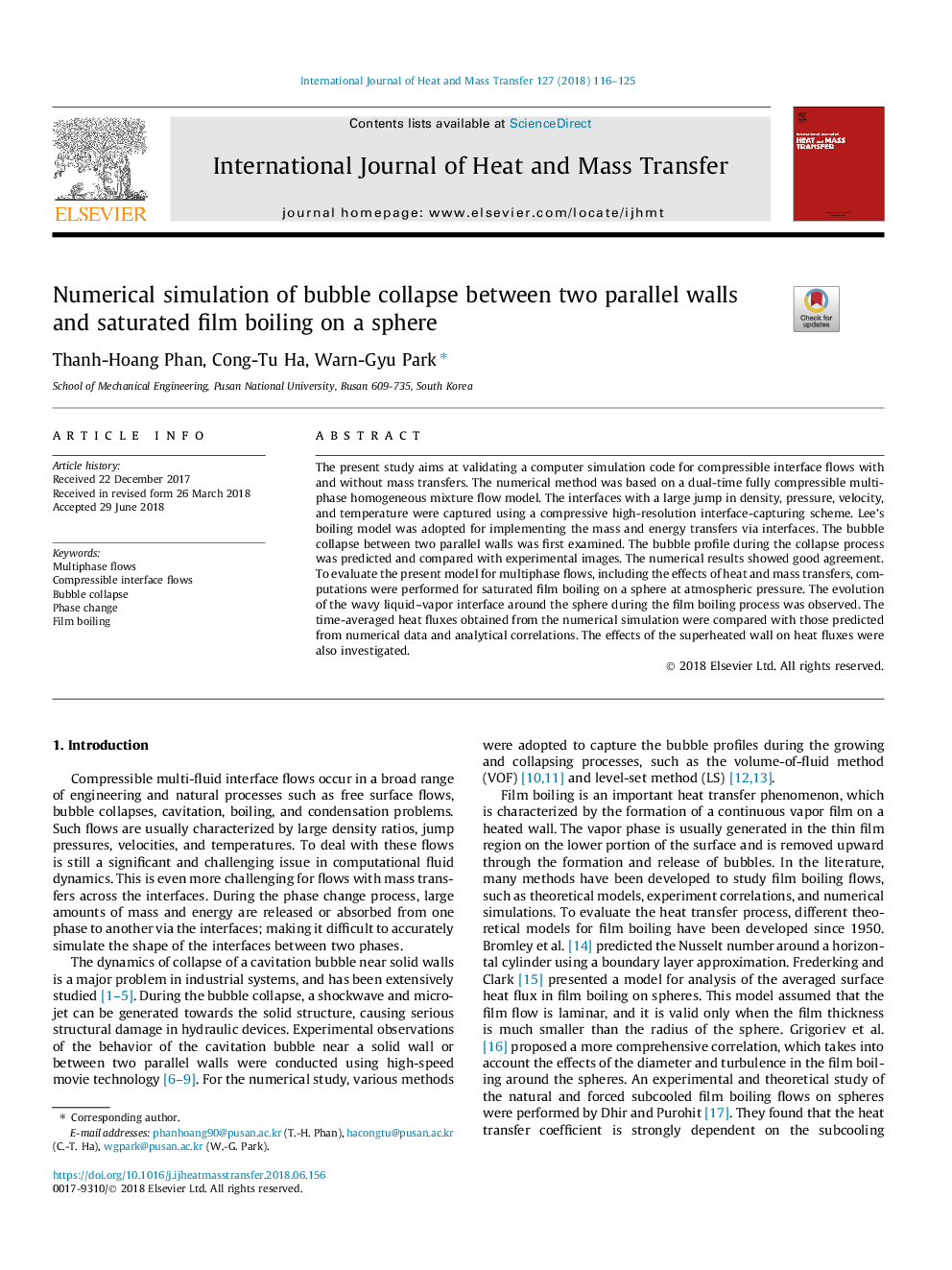| Article ID | Journal | Published Year | Pages | File Type |
|---|---|---|---|---|
| 7053756 | International Journal of Heat and Mass Transfer | 2018 | 10 Pages |
Abstract
The present study aims at validating a computer simulation code for compressible interface flows with and without mass transfers. The numerical method was based on a dual-time fully compressible multiphase homogeneous mixture flow model. The interfaces with a large jump in density, pressure, velocity, and temperature were captured using a compressive high-resolution interface-capturing scheme. Lee's boiling model was adopted for implementing the mass and energy transfers via interfaces. The bubble collapse between two parallel walls was first examined. The bubble profile during the collapse process was predicted and compared with experimental images. The numerical results showed good agreement. To evaluate the present model for multiphase flows, including the effects of heat and mass transfers, computations were performed for saturated film boiling on a sphere at atmospheric pressure. The evolution of the wavy liquid-vapor interface around the sphere during the film boiling process was observed. The time-averaged heat fluxes obtained from the numerical simulation were compared with those predicted from numerical data and analytical correlations. The effects of the superheated wall on heat fluxes were also investigated.
Related Topics
Physical Sciences and Engineering
Chemical Engineering
Fluid Flow and Transfer Processes
Authors
Thanh-Hoang Phan, Cong-Tu Ha, Warn-Gyu Park,
